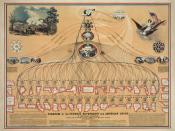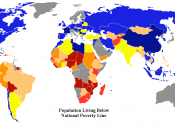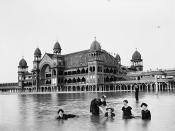The term "poverty" is defined by the Federal government as an annual income of less than $19,223 for a single adult with three children (2004). This definition creates a rigid line forming two populations in the United States: those who fall under the line are poor and those above the line are not poor. David K. Shipler highlights the shortcomings of such a definition in The Working Poor: Invisible in America. As the title suggests, there is a needy population often overlooked by public assistance, job training programs, charity organizations, and the greater population as a whole. This refers to those who linger just above the somewhat arbitrary poverty line. Through the use of personal stories, Shipler illustrates the lives of many people in this situation. He writes about the daily battles of individuals seeking out steady employment and the difficulty of staying employed given the poor public transportation, lack of childcare, and personal illness.
He discusses the struggles of immigrant workers who are ineligible to receive public aid and forced to work in sub par conditions. They are unable to attain citizenship despite the vital role they play in the garment and farming industries. He writes about the challenges of maintaining close family ties that can serve as vital supports to those facing economic hardship. These relationships often need to be sacrificed due to inconsistent hours and erratic employment.
One of the points most clearly highlighted by Shipler's use of personal stories is that no single factor can be isolated as the cause of poverty. In the first chapter, Shipler describes two polarized viewpoints of what causes economic hardship in America. Those who believe in the "American Myth" feel that, with ambition and effort, anyone can prosper in the "land of opportunity." There are also those who...


